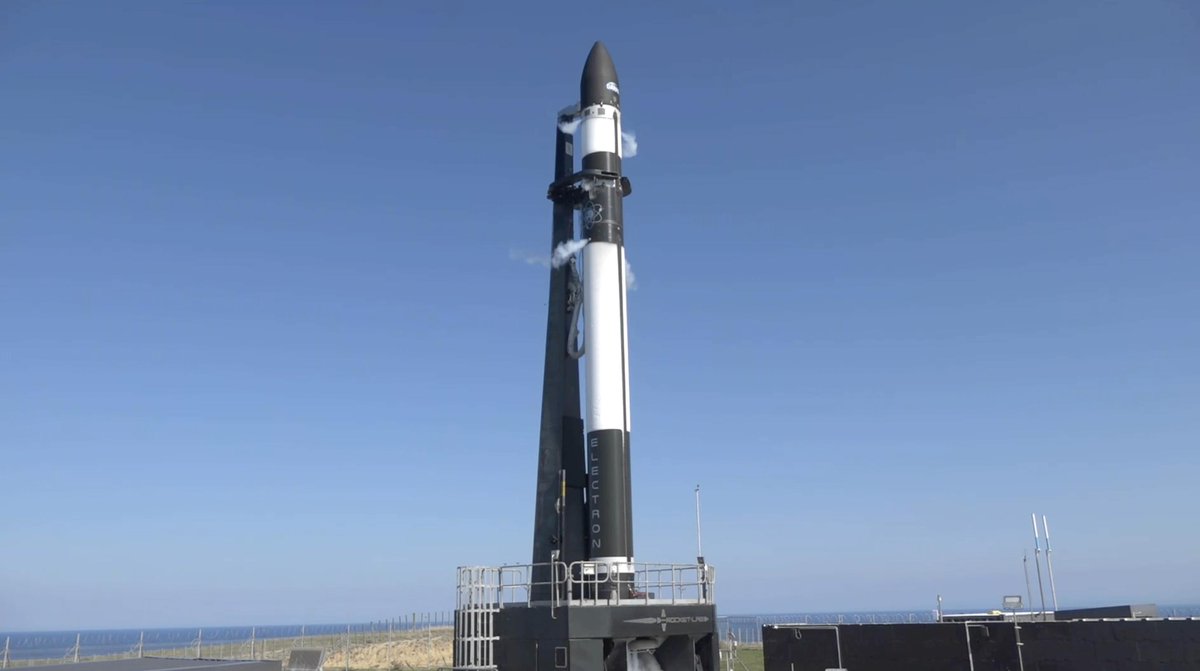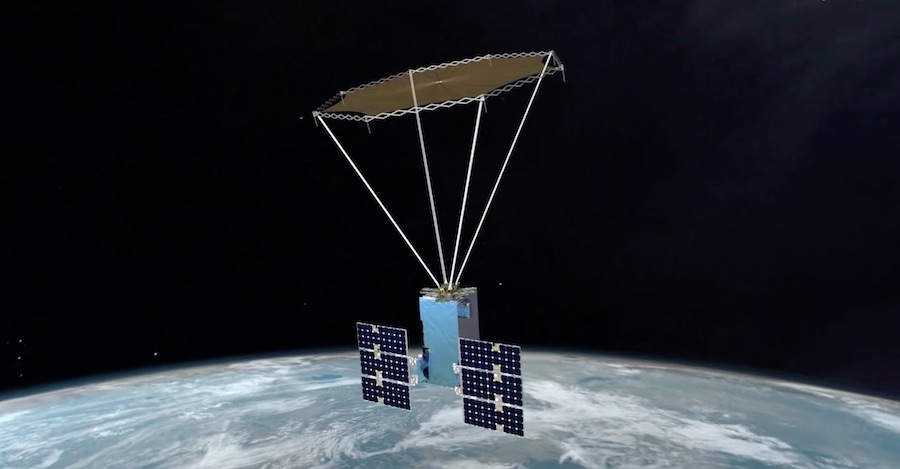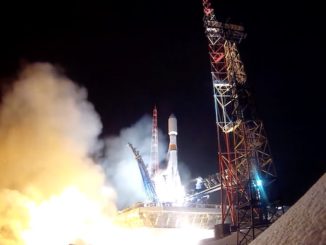EDITOR’S NOTE: Updated March 25 and March 26 with new target launch dates.

Rocket Lab’s launch team canceled a launch attempt Sunday in New Zealand after discovering a misbehaving video transmitter on the Electron booster set to loft a small U.S. military satellite into orbit to test an innovative antenna design. After replacing the transmitter, Rocket Lab announced the launch is set for Thursday (U.S. time) to wait for better weather.
The U.S.-New Zealand launch company announced the initial delay as the Electron counted down to a targeted liftoff time of 7:36 p.m. EDT (2336 GMT) Sunday.
“The team has identified a video transmitter 13dB down with low performance,” Rocket Lab tweeted. “It’s not an issue for flight, but we want to understand why, so we’re waiving off for the day.”
Peter Beck, Rocket Lab’s founder and CEO, added that the rocket was “technically good to fly, as we have redundant links, but we don’t know why the performance dropped and that makes me uncomfortable.”
In an update a few hours later, Rocket Lab said crews aimed to replace the suspect video transmitter in time for a second launch attempt Tuesday (U.S. time). But the company announced further delays Monday and Tuesday to wait for lighter winds and improved weather at the New Zealand launch base.
Rocket Lab also cited concerns that safety cutouts to avoid a collision with another object already in orbit would limit launch opportunities during a planned launch window Wednesday.
We were only going to get 2x 15 min launch windows tomorrow due to space traffic and would have to thread the needle between weather events. #LaunchIsMoreThanARocket https://t.co/E6eWSWVb1G
— Peter Beck (@Peter_J_Beck) March 26, 2019
Liftoff of the Electron rocket is now scheduled for a four-hour window opening at 6:30 p.m. EDT (2230 GMT) Thursday. In New Zealand, the launch window will open at 11:30 a.m. local time Friday.
The two-stage Electron rocket will launch the Defense Advanced Research Projects Agency’s Radio Frequency Risk Reduction Deployment Demonstration satellite into a 264-mile-high (425-kilometer) orbit, where the spacecraft will unfurl an antenna in an experiment to demonstrate how expandable reflector arrays could be stowed into volumes tight enough to fit on a small, relatively inexpensive rocket.

Known as R3D2, the $25 million satellite carries an antenna made of tissue-thin Kapton material, which will open to a diameter of nearly 7.4 feet (2.25 meters) in orbit.
The spacecraft was integrated by Northrop Grumman. R3D2’s spacecraft bus was provided by Blue Canyon Technologies of Boulder, Colorado, and the antenna was designed and built by MMA Designs in Louisville, Colorado.
The R3D2 mission is Rocket Lab’s first launch for the U.S. Defense Department, which is examining how to field more small satellites to provide the military with communications, battlefield surveillance, and other services, making the military’s spacecraft fleets more resilient to attacks and less expensive to design, build and launch.
Rocket Lab’s Electron rocket has launched four times since May 2017. After the Electron’s inaugural test flight fell short of orbit due to a ground tracking error, Rocket Lab has logged three straight successes delivering CubeSats to orbit for NASA, commercial companies and educational institutions.
Once it lifts off, the Electron rocket will head east from Rocket Lab’s privately-operated launch base on New Zealand’s North Island. The R3D2 satellite is set to deploy from the Electron’s upper stage around 53 minutes into the flight, kicking off the spacecraft’s planned six-month tech demo mission.
Email the author.
Follow Stephen Clark on Twitter: @StephenClark1.



